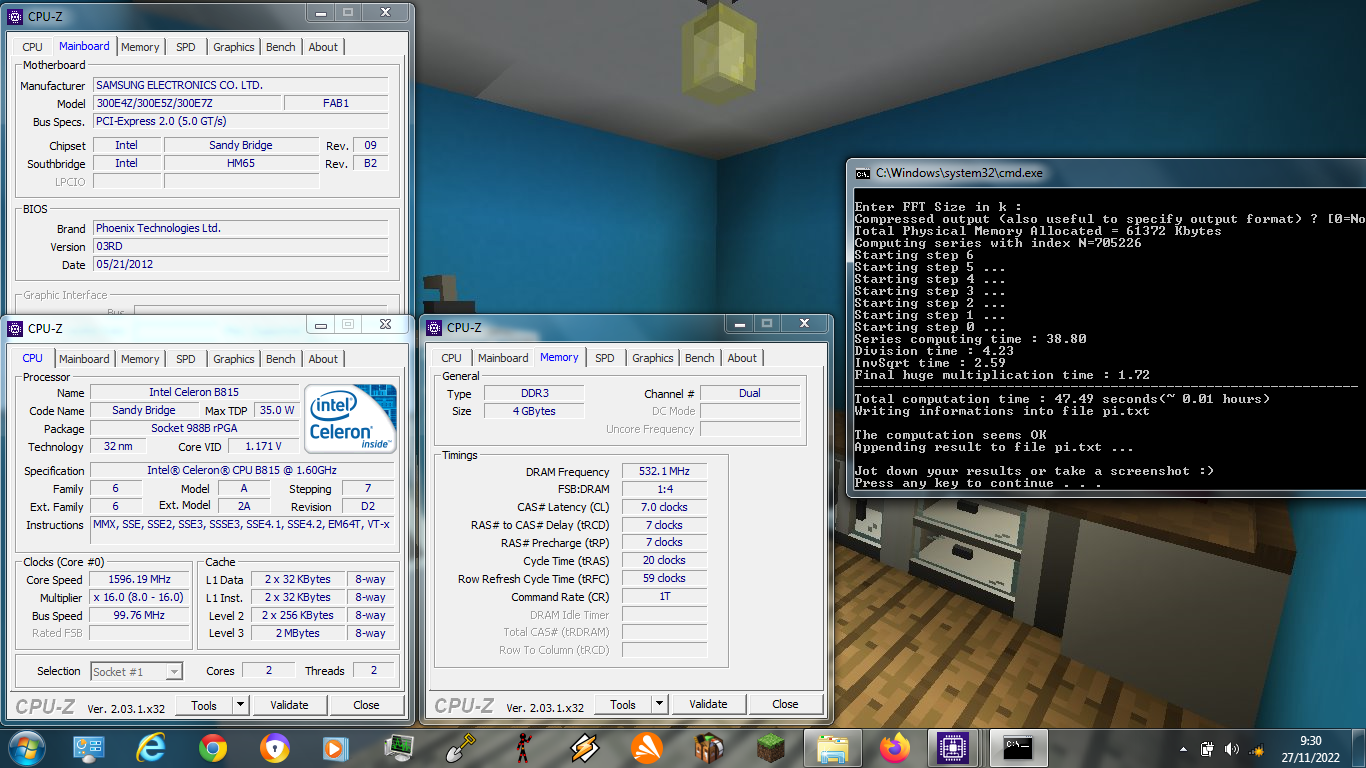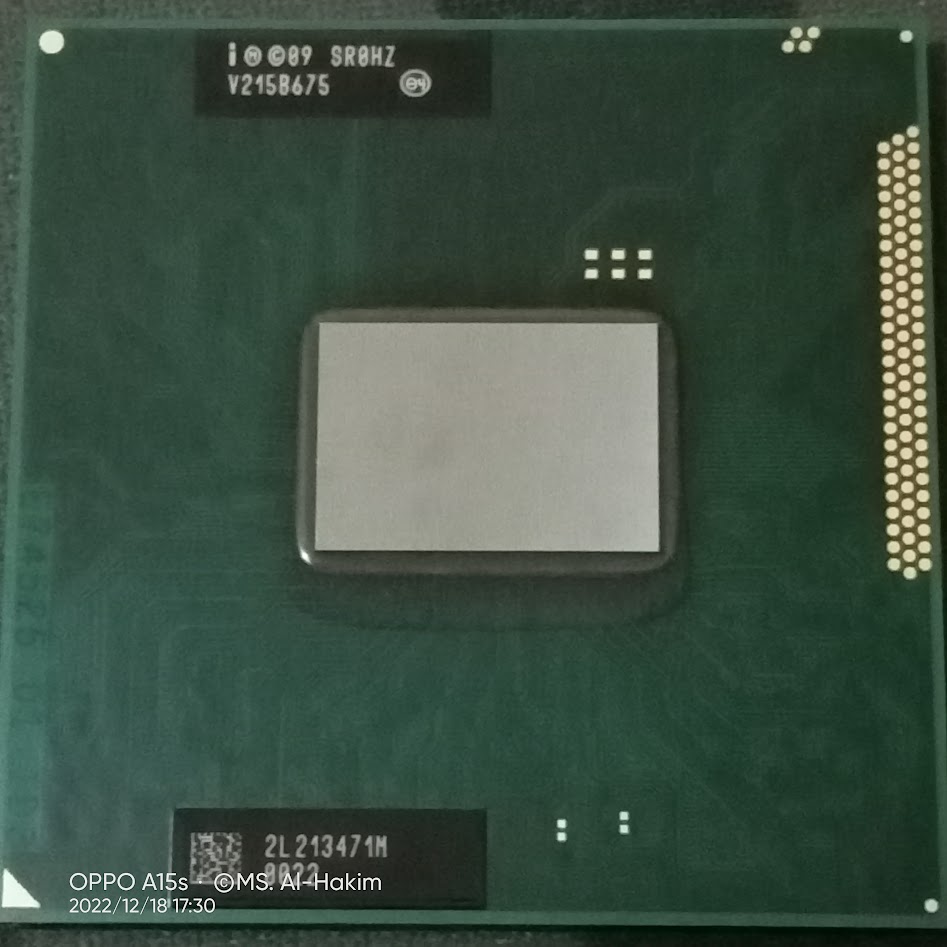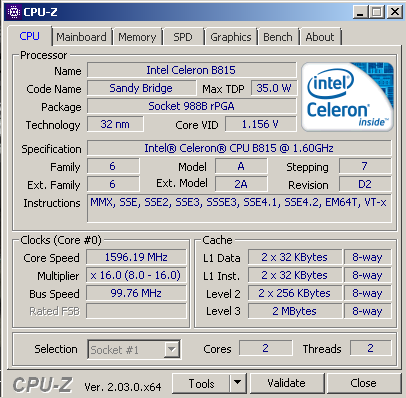PiFast score 47sec 490ms with a Celeron B815
Saturday, 26 November 2022 19:30 | Update at 2 years ago
Media Gallery
Screenshot

Device, Setup, etc



URL
https://hwbot.org/submission/5130919https://www.facebook.com/hakimnu.id/posts/pfbid02FXBXg3xtG4HrEu5C2bSfZ4bDr3N795S5knwSGxyQWyHEqgA6tNNqcf242BsBEMNl
Information Detail
Hardware: Intel Celeron B815
Specs:CPUID : Intel(R) Celeron(R) CPU B815 @ 1.6GHz
Architecture : x86
Codename : Sandy Bridge
L3 Cache : 2MB
Clock : 1.6GHz
Core/Thread : 2/2
TDP : 35W
Technology : 32nm
Socket : FCPGA988
IGPU : Intel HD Graphics Mobile Gen 2 (Sandy Bridge)
See more specification...
Software: PiFast
Score: 47sec 490ms
About: PiFastPiFast is a classic benchmark application designed to measure processor performance in performing intensive mathematical calculations, particularly in calculating the value of pi (π) to millions of digits. This benchmark is renowned for being lightweight, fast to run, and highly accurate in reflecting the capabilities of single-thread CPUs, making it a popular choice among overclockers and system performance testers since the early days of processors.
In PiFast testing, the system is tasked with calculating the value of pi using a fast algorithm based on high-precision mathematics. The faster the time achieved, the higher the performance of the tested CPU. Since PiFast runs on a single core (single thread), this benchmark is highly relevant for measuring the efficiency of a single core in both modern and older processors.
Features and Advantages of PiFast:
- Very lightweight and does not require installation.
- Ideal for testing system stability after overclocking.
- Focuses on single-thread performance, an important indicator in gaming and lightweight application performance.
- Provides test results in seconds, suitable for quick and repetitive testing.
- Compatible with various Windows versions, including older systems.
Although it is quite outdated compared to modern benchmarks, PiFast is still used today as a simple and effective testing tool, especially among the overclocking community and hardware enthusiasts who want to validate performance without running heavy benchmarks.
The Intel Celeron B815, released in 2012, is an entry-level mobile processor based on the Sandy Bridge architecture. Designed for budget laptops, it features 2 cores and 2 threads with a fixed clock speed of 1.6 GHz. The processor does not support Turbo Boost or Hyper-Threading, limiting its multitasking capabilities.
Manufactured using 32nm process technology, the Celeron B815 has a TDP of 35W, which is relatively high for a low-end mobile CPU. This higher thermal output typically results in shorter battery life and more heat generation compared to modern low-power processors.
For graphics, the processor is equipped with Intel HD Graphics 2000, which runs at a base frequency of 650 MHz and can boost up to 1.0 GHz. While not suitable for gaming, this integrated GPU handles basic visual tasks like 720p video playback, simple animations, and light graphical workloads adequately.
In everyday usage, the Celeron B815 performs best with lightweight applications such as web browsing, word processing, and playing standard-definition videos. However, it struggles with modern operating systems, multitasking, and heavier workloads due to its limited core/thread count and lack of advanced CPU features.
Hardware Detail:
Device: SAMSUNG 300E4Z
RAM: 4GB DDR3 Dual Channel
OS: Windows 7
* Not Avaiable
